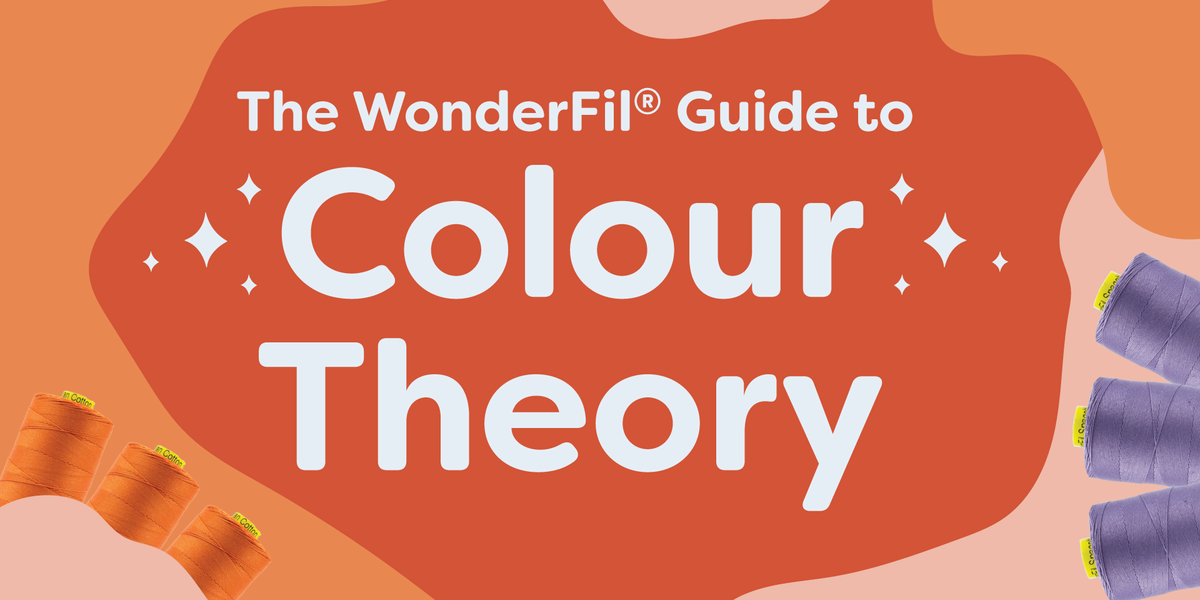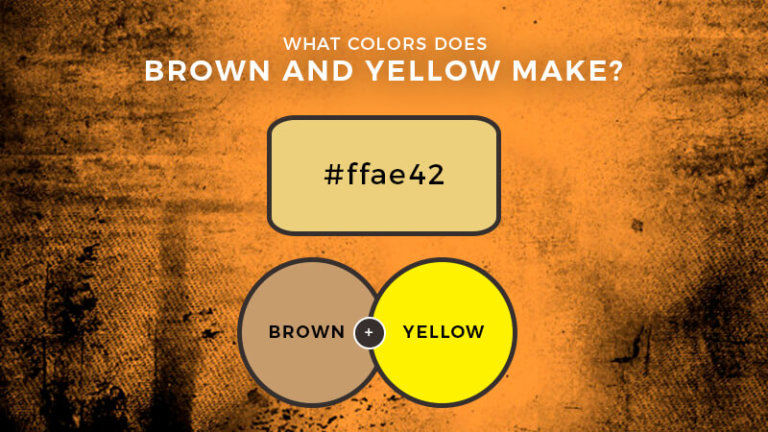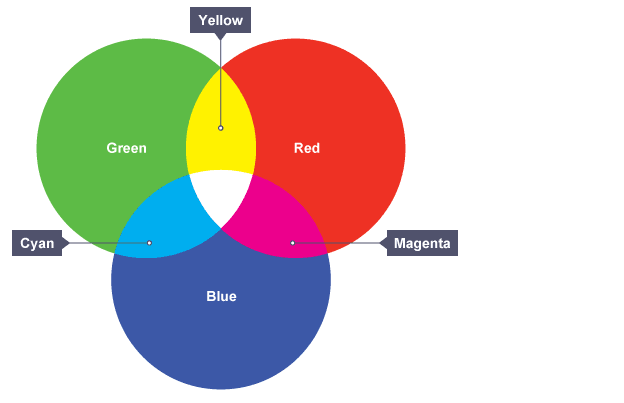Because black is essentially the absence of color, it is one of the easiest and – for me – most fun colors to create. You can make black by mixing your three primary colors together. Doing this can make brown, as well, but the more of the colors you add, the darker it will become until finally, it is black. You can also create black by using complementary colors.
Complementary colors are colors that are directly across from one another on the color wheel. These include red and green, orange and blue, and yellow and purple. These colors essentially cancel out one another to make black.
The color orange is created by mixing red and yellow together. For a darker, more fall-colored orange, add more red into the mixture. Once you have the shade you want, remember you can further lighten or darken it by adding white or black, respectively. So the distinction in color systems really comes down to the chemical makeup of the objects involved and how they reflect light.
Additive theory is based on objects that emit light, while subtractive deals with material objects like books and paintings. "Subtractive colors are those which reflect less light when they are mixed together," says Raiselis. In this context, the term primary color refers to three exemplar colors as opposed to specific pigments. As illustrated, in the RYB color model, red, yellow, and blue are intermixed to create secondary color segments of orange, green, and purple. The second secondary color in the palette is purple.
Purple can be created by mixing the primary colors of red and blue. An equal mixture of pure red paint and pure blue paint will result in a pure purple. However, this 'pure purple' is often darker than most people like. To get a nice, bright purple, you will want to use a magenta color instead.
You can then mix the magenta with a blue or a cyan, and voila! An additive color is one created by mixing red, green and blue light in different combinations. Additive colors begin as black and become brighter as you add different light. In contrast, a subtractive color is made by partial absorption of different colors of paint or ink.
They begin as white and take on the appearance of the added colors or their mixtures. When we go to mix paints, we find it's difficult to pick the right paint combination — blue and yellow, or green and yellow, or green and blue? — to get the right shade of green, because green mixtures are different from other mixtures. We must know the material behavior of different pigments and paints, and which ones to choose for different purposes. All these mixing complications are the reason there are so many premixed convenience green paints on the market — more premixed colors than for any other hue.
You start with white, and you're putting a layer of something on top of it, which allows a certain wavelength of light through but takes away everything else. So whatever you add, it always gets darker, and changes colour in a certain way. When you mix light, you're starting with black, and you're adding something.
If you think a the way a TV works, it sends out red and green and blue and makes a coloured picture. It's a fundamentally different way of doing something. An interesting aside to that is that when you take a picture with your camera, it records red, green and blue.
When you print it out, the printer has to convert it into something called CMYK, which is cyan, magenta and yellow. Printers use a different palette because when you add things subtractively, you end up with different colours. In theory, if you mix the cyan, magenta and yellow together, you get black, although in practice you don't quite, so they have to add black to make everything work. You could also create it by mixing equal parts of green and blue. "When the blue flashlight circle intersects the green one, there is a lighter blue-green shape," he says.
As you likely remember from grade school, primary colors can be combined to make secondary colors. Mix equal parts red and blue paint, and you get purple; mix equal parts red and yellow paint, and you get orange; mix equal parts blue and yellow paint, and you get green. Secondary colors are made by combining two primary colors. Secondary colors are created by the equal mixture of two primary colors. For example, yellow and red make orange, red and blue make purple, and blue and yellow make green. On a color wheel, the secondary colors are located between two primary colors.
The painter's color wheel is a convenient way to understand how to mimic some colors by mixing red, yellow, and blue pigments. This does not make red, yellow, and blue the primary colors of the human visual system. They can't reproduce the widest variety of colors when combined. Cyan, magenta, and yellow have a greater chromatic range as evidenced by their ability to produce a reasonable black. No combination of red, yellow, and blue pigments will approach black as closely as do cyan, magenta, and yellow.
The primary colors are red, green, and blue — not red, yellow, and blue. Therefore, in order to make brown in painting, printing, and digital art, you need to combine colors. You can create brown from the primary colors red, yellow, and blue. Since red and yellow make orange, you can also make brown by mixing blue and orange. The RGB model used for creating color on screens like the television or a computer uses red and green to make brown.
To make the color green, you will first need the two primary colors blue and yellow. To get these different shades of green, you simply vary the ratio of blue to yellow paint in your mixture. If you want a cooler shade of green, you should mix more blue into your mixture; alternately, if you want a warmer shade of green, you will need to add more yellow. Mix equal parts of red, yellow, and blue paint on a palette to make black paint. Combining complementary colors like yellow and purple, red and green, or blue and orange is possible. You can make a rich black by mixing blues and browns together.
Many artists use a dull scarlet or orange paint, such as burnt sienna , to desaturate their green mixtures . But these colors actually shift the green hue back toward yellow as much as or more than they shift it toward the neutral center of the wheel, resulting in a yellowish green color. The best paints for desaturating green mixtures straight toward gray are much bluer, such as dioxazine violet for a yellow green, and quinacridone carmine (PR N/A) for a blue green. Of course, if a warm shift is the effect you want, then a transparent red iron oxide or burnt sienna is ideal.
When the red and green lights mix, the result is yellow. When green and blue lights mix, the result is a cyan. When the blue and red lights mix, the result is magenta. Green–red–blue additive mixing is used in television and computer monitors, including smartphone displays, to produce a wide range of colors.
Even though blue and yellow are both primary colors on the painting color wheel, you can use other paints to create them. For blue, you will have to look at the subtractive color model of CMYK, which is usually used for ink. On that chart, cyan and magenta mix together to make blue.
The three primary colors of light for additive color mixing are red, green, and blue. When any two primary-color lights shine on a white object, the object appears to be the complementary color of the third primary color. For example, red and green light add to yellow, which is the complementary color of blue. As we know, there are three primary colors in the color wheel. However, our projects would be quite boring if those were the only three colors we were ever able to use. That is where secondary and tertiary colors come into play.
There are three secondary colors – purple, green, and orange – and six tertiary colors. This guide will help you learn to make many of these different colors through color mixing. To make green, combine equal amounts the primary colors of pure blue and pure yellow. For a warmer, lighter hue to the green, add more yellow. Alternatively, add more blue to get a cooler, but deeper green. Then, lighten the green by adding white or make it a darker shade by adding black.
You will get brown or gray if you mix pink and green together. The result is the same for all complementary colors, including blue and orange and yellow and purple. Complementary colors produce brown or gray because they cover such a vast spectrum of shades, so when mixed, everything becomes muddled. Have you ever mixed red and blue paint only to find you have "mud" instead of purple? Want to know how to create any resin color you may need for a project?
Lack of good information has made mixing colors difficult in the past. Before the invention of color photography, color mixing was not very well understood. Many believed that red, yellow, and blue were the primary colors, from which you could make all others. Now, we know that magenta, yellow, and cyan are the true primaries and give much better results. When mixed together, green and yellow combine to create a color called yellow-green, according to Color Matters.
The color result can also be manipulated by adding varying amounts of the two colors. In this case, yellow is the primary color and green, which is created by mixing blue and yellow, is the secondary color. And as far as blue goes, it's not as pure as you think either. "It looks pure because it absorbs strongly in two thirds of the spectrum," Westland says.
You will need to mix the two primary colors of red and yellow to get your secondary color of orange. You can then change the shade by adding more red or yellow. This will then create a tertiary color, which can either be a red-orange or yellow-orange.
The three primary colors in additive mixing are red, green, and blue. In the absence of color or, when no colors are showing, the result is black. If all three primary colors are showing, the result is white. Add light and human eyes to the darkness and you get color — a perception of the human visual system. The retina at the back of the human eye has three types of neurons called cones, each sensitive to a different band of wavelengths — one long, one medium, and one short. The long wavelength cones are most stimulated by light that appears red, the medium wavelength cones by light that appears green, and the short wavelength cones by light that appears blue.
A monochromatic wavelength of light can be selected as a representative for each of these colors. These become the primary colors of a system that can be used to reproduce other colors in a process known as additive color mixing. "Subtractive colour mixing results when we mix together paints or inks," Westland says. Take a piece of white paper; this paper reflects all of the wavelengths in the visible spectrum to a very high degree. The yellow ink absorbs the blue wavelengths, leaving the others — which are seen as yellow — to be reflected. So rather than being additive, in this case we start with white and then start to subtract light at certain wavelengths as we add the primaries."
The color yellow-green is considered a tertiary color, says Color Matters. Tertiary colors are created by mixing a primary and secondary color together. Other tertiary colors include red-orange, red-purple and blue-purple, which is also called blue-violet.
If you have trouble with the magenta, yellow, cyan paradigm, think of magenta as a certain kind of red, and cyan as a certain kind of blue. In fact, magenta, yellow, and cyan are the opposite colors of green, blue, and red respectively. Remember, "the proof is in the pudding," and the correct primaries will be the ones that work best. Can you make bright magenta and cyan from yellow, blue, and red? Can you make bright blue and red from magenta, yellow, and cyan?
By convention, the three primary colors in additive mixing are red, green, and blue. In the absence of light of any color, the result is black. If all three primary colors of light are mixed in equal proportions, the result is neutral . Unlike the RYB and the CMYK color models, RGB is a form of additive color mixing. In this color model, the primary colors are red, green, and blue.
CMYK is considered a form of subtractive color mixing, and it's used for color printing. The three primary colors are cyan, magenta, and yellow, and combinations of them can mix together to create red, green, and blue. When all three primary colors mix together, they create black. Yellow light is a combination of red and green light. So combining blue with yellow light is like combining blue light with red and green light. The result of combining these three primary colors of light is to produce white light.
Does Mixing Blue And Yellow Make Green If you mix red, green, and blue light, you get white light. Red, green, and blue are referred to as the primary colors of light. Mixing the colors generates new colors, as shown on the color wheel or circle on the right.

























No comments:
Post a Comment
Note: Only a member of this blog may post a comment.